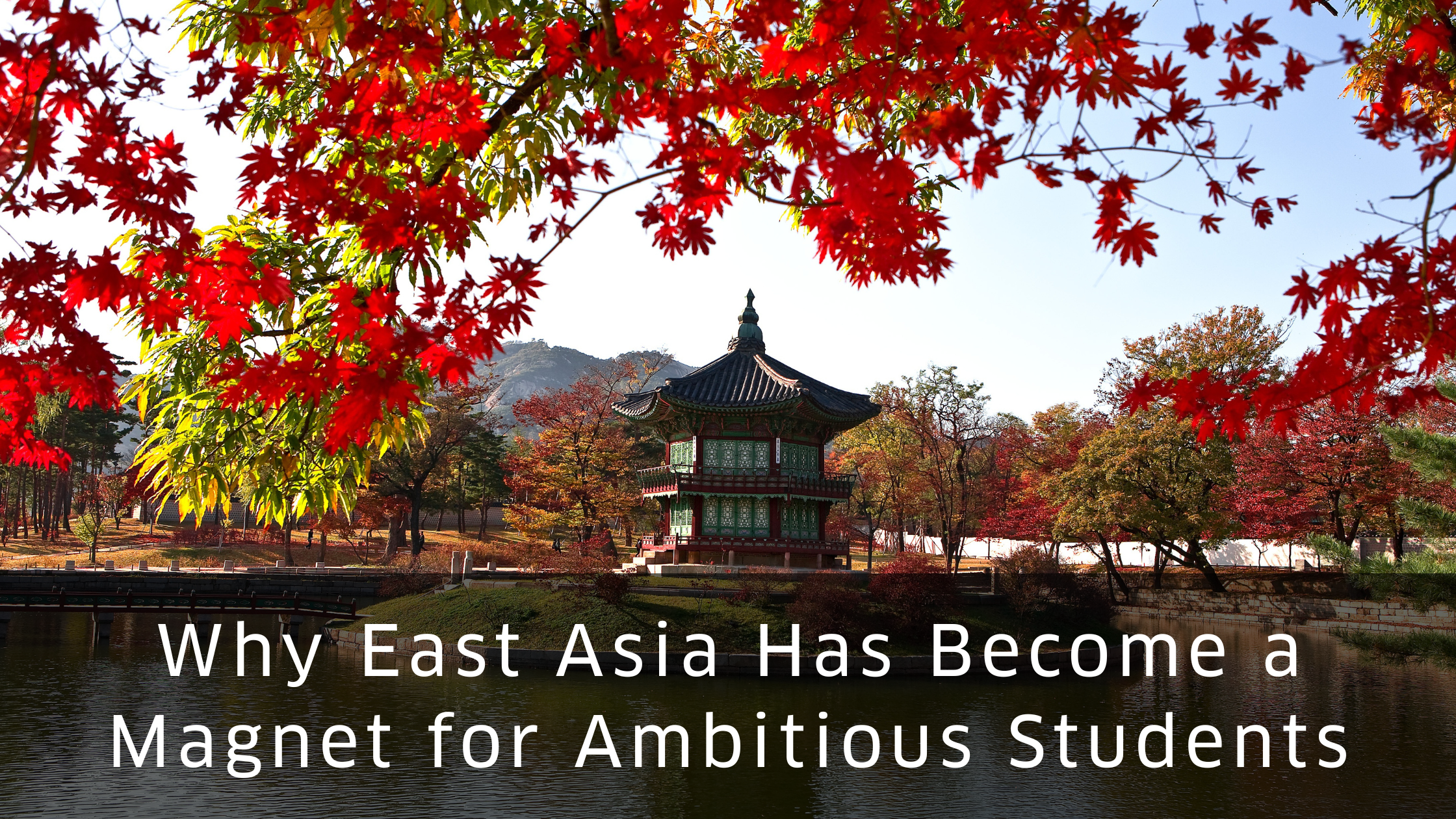If you are looking for an academic path that offers a real advantage in the global job market, it is difficult to overlook East Asia. This part of the world includes some of the most influential economies and universities, along with cultures that combine deep historical roots with pioneering innovation. China, Japan, South Korea, Taiwan and Hong Kong each offer learning environments that are shaped by research, technology and a strong commitment to international talent.
Understanding the region and gaining language proficiency can open the door to exceptional academic and professional opportunities. Below is a closer look at why East Asia stands out and how language skills, affordability and research strength all work together to create a powerful environment for students.
The Language Advantage
Many universities in East Asia offer programs entirely in English. Even so, gaining competence in the local language can significantly improve an applicant’s profile and enrich day-to-day life. It also allows students to access a wider range of courses and improve their prospects in the job market.
 Mandarin in Taiwan and China
Mandarin in Taiwan and China
For programs taught in Chinese, universities require formal test scores. Taiwan typically accepts TOCFL Band A Level 2 or HSK Level 4 for Chinese-medium programs. These requirements signal a desire for students who can genuinely engage with Chinese-language academic content.
Learning Mandarin also makes it easier to settle into campus life. For example, at National Taiwan University, language exchange programs are available to help international students develop their skills while interacting with local peers.
Although Hong Kong largely uses Cantonese in daily life, it remains a key entry point to China’s academic and economic landscape and offers an exceptional study environment with institutions that rank among the world’s best.
Korean for Study and Scholarships
South Korea attracts large numbers of international students every year. Many universities teach fully in English or run a significant portion of courses in English. Nevertheless, Korean language preparation is a valuable asset.
Students often choose to complete a Korean language course before the academic year begins. While English is commonly spoken on university campuses, it is less widespread among the general public, and language skills make life in South Korea noticeably smoother.
Korean proficiency can also influence scholarship opportunities. Some private universities outside the Seoul metropolitan area offer substantial tuition coverage to graduate students with strong academic performance and solid language ability. In some cases, scholarships can cover as much as 80 percent of tuition fees.
What Makes These Universities Competitive on the Global Stage
East Asian universities stand out for their research capabilities, technology-driven curricula and long term investment in innovation.
 Hong Kong’s Universities
Hong Kong’s Universities
Hong Kong’s higher education system has built a reputation for world class standards. The Education Bureau actively works to attract international talent by encouraging universities to expand capacity and improve the quality of their programs.
Leading institutions include City University of Hong Kong, The Chinese University of Hong Kong, The Hong Kong Polytechnic University and The University of Hong Kong. These universities are known for their academic rigor, international faculty and strong industry connections.
Research Strength in South Korea
South Korea has about 400 national and private universities, many of which prioritise technological research. Campus laboratories regularly focus on emerging scientific fields, and both national and private institutions offer a wide range of funding opportunities. Government scholarship programs such as the GKS help attract international graduate students with strong academic records.
Taiwan’s Global Rankings
Taiwan has become a major academic destination, earning global recognition for research and innovation. In 2023, more than 100,000 international students enrolled in Taiwanese institutions.
Eight Taiwanese universities are ranked among the top 500 in the world in the QS World University Rankings 2025. National Taiwan University sits at 68th and reports an impressive employment rate of 99.9 percent. National Tsing Hua University ranks 210th and is well known for its advanced research hubs, including the Brain Research Center. National Yang Ming Chiao Tung University, ranked 219th, is a leader in smart medical research and aims to climb into the world’s top 100.
Taiwan’s economy is another reason many students choose to study there. With the rapid expansion of the semiconductor and AI sectors, graduates find themselves well positioned for careers in high demand fields
Affordability and Opportunities
Many students assume that high quality education in East Asia comes with a high financial burden. In reality, several countries in the region offer lower tuition fees, generous scholarships and a cost of living that can be far more manageable than in Western countries.
 Financial Benefits in Taiwan and South Korea
Financial Benefits in Taiwan and South Korea
Taiwan is often cited as one of the most affordable places to pursue higher education. The cost of studying there can be more than 90 percent cheaper than in the United States and more than 86 percent cheaper than in the United Kingdom. Living expenses are also significantly lower, making daily life more affordable.
Scholarship options are extensive. Both the Taiwan Scholarship Program and Taiwan ICDF Scholarship offer tuition support of up to NTD 40,000 per semester, along with monthly stipends for living costs.
In South Korea, national universities are usually cheaper than private ones. Undergraduate students at private universities outside Seoul may qualify for scholarships covering up to 50 percent of tuition, depending on their GPA.
Work Experience and Career Pathways
East Asia offers clear avenues for gaining work experience while studying and for building a long term career after graduation.
In Taiwan, international students can work up to twenty hours per week with a work permit. English tutoring is especially well paid, with hourly earnings that can reach the equivalent of INR 2,500. Taiwan’s average annual salary is around INR 17 lakh, which makes it an appealing destination for post graduation employment.
Hong Kong provides structured pathways for internships, part time work and post study employment. Many students remain in the city after graduation because of its strong finance, technology and logistics sectors.
A Future Built on Global Competence
Choosing to study in East Asia means more than selecting a degree program. It is an investment in cultural understanding, regional expertise and global readiness. The universities in this region offer strong academic foundations, but they also connect students to industries that shape the future of technology and innovation.
If your goal is to stand out in a competitive international job market, this region provides an opportunity to gain both academic excellence and cultural fluency. Beginning an application now is a step toward a stronger, more globally informed future.




